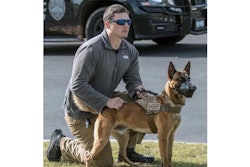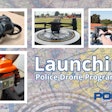 A subject not responding to your commands might be autistic.Photo: Getty Images
A subject not responding to your commands might be autistic.Photo: Getty Images
Recently on PoliceMag.com, we reported that the Newport News (VA) Police Department announced the launch of a new program aimed at increasing officers' awareness of individuals in the community with Autism Spectrum Disorder (ASD)—and providing those officers with information to help keep people with autism safe.
Newport News PD said on Facebook, "What may seem like a simple interaction with police could be a very traumatic situation for a person with autism and confusing to officers."
The new program—dubbed Project Guardian—educates officers about the common characteristics of the disorder, as well as ways to comfort these individuals and de-escalate any situations that may arise.
Newport News PD has also created a database to hold information about local citizens with autism.
The Facebook post concluded, "Parents and guardians are asked to submit basic information about the individual with autism, a photo of the person, and any special concerns officers should be aware of should they encounter them. The information will be entered into the city's dispatching system, and the address will be flagged so officers and first responders are aware of the individual and their needs when they are called to the residence."
The agency said that participation in the Project Guardian database is voluntary.
Newport News is not the first police agency to implement a policy to address ASD subjects—in fact, such programs are becoming commonplace. Several months ago on PoliceMag.com, we reported on a program launched by the West Liberty (IA) Police Department that aimed to train police, fire, and EMS responders about safely navigating encounters with subjects on the autism spectrum.
West Liberty PD was also among the many agencies across the country to produce special patches and skin their patrol vehicles in the puzzle-piece pattern that connotes World Autism Awareness Day.
An Increasing Problem
The Centers for Disease Control and Prevention (CDC) says that there has been a steady increase in children on the autism spectrum in recent years.
One in 166 children were diagnosed on the spectrum in 2004. That number is now—according to the CDC—one in 59.
According to Autism Speaks (https://www.autismspeaks.org)—an organization dedicated to promoting solutions "across the spectrum and throughout the lifespan" for the needs of individuals with autism and their families—the United States still lacks any reliable estimate of autism's prevalence among adults. This is problematic because adults with autism are more likely than other adults to encounter police.
 The West Liberty (IA) Police Department has launched a program aimed to train police, fire, and EMS responders about safely navigating encounters with subjects on the autism spectrum.Photo: Doug Wyllie
The West Liberty (IA) Police Department has launched a program aimed to train police, fire, and EMS responders about safely navigating encounters with subjects on the autism spectrum.Photo: Doug Wyllie
Autistic individuals are at risk of being victims of crime—from bullying to sexual assault to battery. Further, although they are statistically less likely to commit a crime, their potentially erratic behavior may cause concerned citizens to call police for assistance.
As the number of ASD subjects rises, the number of police interactions with them will inevitably go up as well.
Here are some tips and best practices for encounters with individuals with autism spectrum disorders.
Practical Tactical Tips
First and foremost, be advised that when you're dealing with a subject on the autism spectrum, there may be no outward sign whatsoever of that individual's unique condition. People on the spectrum can physically look just like so-called "neurotypical" individuals.
Unlike the indicators—such as the "sweaty naked guy"—that you're dealing with someone on illicit narcotics, there may be no immediately perceptible physical trait that will tell you you've got a subject on the spectrum. The behavior may be similar, but the telltale signs of drugs are not there because the drugs themselves are not present.
Here are 10 tips/tactics to keep in mind for encounters with ASD subjects:
• People on the autism spectrum may not know what is—or isn't—appropriate in a given situation and may not understand that their behavior has raised concern among a reporting party. If possible, try to have a family member present to help explain that what just occurred is "not acceptable for someone affected."
• People on the spectrum can often be over-sensitive to outside stimuli, or can have over-sensitive responses to such stimuli. Shiny badges, flashing lights, sirens, elevated voices, and other input can have a severely adverse effect on an ASD subject.
• Conversely, they may be entirely unresponsive to outside stimuli, so pain compliance tactics may be ineffective. The application of a pain compliance technique might create in the subject a severely violent response. Just because an individual is on the spectrum doesn't mean they're not dangerous.
• When an ASD subject goes missing, deploy assets to local bodies of water. For reasons that are still not well understood, ASD subjects are attracted to water, and tragically many such subjects have been found drowned in lakes, ponds, rivers, and streams.
• Be wary of using "command presence" with an ASD subject. While enormously helpful with other resistive subjects, this tactic can backfire badly and make an already bad scenario significantly worse. Using a calm, smooth, even demeanor can de-escalate contacts with individuals on the spectrum.
• ASD subjects may have speech, but they may also not. Further, they may have difficulty processing what you say in a timeframe you're accustomed to other individuals replying to your questions. Their delayed response is not an attempt at deception but rather a process of translating what you've said into concepts they can understand.
• Understand that some individuals on the spectrum may be fascinated by your duty gear. They may reach out to touch your badge or even your gun.
• Individuals on the spectrum may demonstrate repetitive behavior, sometimes even including self-harm such as striking their head with their fists. They may also lash out at others with biting or spitting.
• Communication is key. In most cases where a contact with an ASD subject goes sideways, the root cause is that either the ASD individual or the officer—or both—failed to understand the other person. Slow down, listen, and hear.
• Finally, a giant step in dealing with ASD subjects in your city or town is having an idea of who they are. Like the abovementioned program in Newport News, one of the best tools at an agency's disposal is having advanced knowledge about the individuals in their jurisdiction who are on the spectrum. Invite family members to volunteer information about their loved ones. Ask what their ASD family member is "triggered" by. What helps bring them back down to earth? Do they have a favorite subject to talk about? What's their "comfort" food? Get this stuff into your CAD system and be ready for that call.
Final Words
Individuals on the ASD spectrum have a tendency to attract the attention of law enforcement because they are either the victims of crimes or they are accused of committing criminal acts, despite the fact that they are likely unaware that their actions are seen by others as threatening or dangerous.
Try to remember that a contact with a person on the spectrum is frequently more of a medical call than anything else. Yes, an interaction with someone on the autism spectrum can go wildly sideways, but if you have the time and distance to keep the subject calm and prevent them from becoming a threat to you, themselves, or another person, everybody will be better off for it.
Doug Wyllie is contributing web editor for POLICE/PoliceMag.com.


















